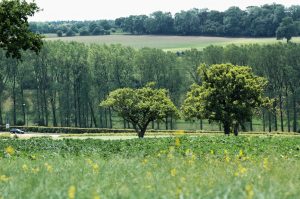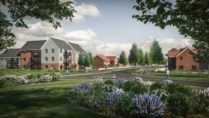Going for the Green Belt
A recent Times article titled “Voters are Ready to Hear the Case for Building Homes on the Green Belt” has explored the changing dynamics and public sentiment surrounding the contentious issue of building homes on the green belt. Penning the article, Ben Cooper – lead researcher at the Fabian Society on Housing – highlights the nuanced attitudes of the public perception surrounding greenbelt policy.
Belt” has explored the changing dynamics and public sentiment surrounding the contentious issue of building homes on the green belt. Penning the article, Ben Cooper – lead researcher at the Fabian Society on Housing – highlights the nuanced attitudes of the public perception surrounding greenbelt policy.
The article challenges the notion that the public uniformly opposes building on the green belt. While the term “green belt” has historically evoked strong emotions, a poll conducted by the Fabian Society’s Commission on Poverty and Regional Inequality along with YouGov, explored public opinions on obtaining planning permission for affordable housing on open areas surrounding towns and cities, effectively referring to the green belt without explicitly using the term.
Contrary to common assumptions, the poll reveals that a significant portion of the public recognises the severity of the housing crisis and favours decisive action, particularly in the construction of affordable homes. Approximately 59 percent of adults surveyed believed that planning permission should be available at least some of the time on such land. Within this majority, 47 percent can be categorised as “balancers” who support planning permission in specific circumstances, while 12 percent believe it should be granted almost always.
The survey results also shed light on how different demographic groups perceive the issue. Young people, individuals living in London, and disabled individuals displayed greater support for granting planning permission on the green belt. This inclination can be attributed to their higher likelihood of experiencing the housing crisis firsthand. Importantly, even those aged 65 and over, often associated with being more resistant to change, expressed support for planning permission under certain circumstances.
A critical finding from the poll is the substantial shift in public opinion when the phrase “green belt” was explicitly mentioned. Support for granting planning permission dropped to 43 percent, with opponents outweighing proponents at 46 percent. Ben notes that this change in wording transformed the policy from one that secured broad agreement to becoming highly divisive. Strikingly, the responses revealed that young people became more supportive when the green belt was mentioned, while older respondents became more likely to oppose it.
The analysis emphasises that the success of any policy on building homes on the green belt hinges on effective communication. The findings indicate the existence of a potential majority that can be persuaded to support more affordable housing on the outskirts of towns and cities. However, Ben warns that a vocal minority, often categorised as Nimby’s, can derail nuanced discussions, and turn openness into outright hostility.
To navigate these challenges, political parties like Labour, who have expressed support for allowing councils to build on the green belt, must employ clear and inclusive language. For more information on this please see Chelgate’s article on Labour housing policy. Communicating the dire housing crisis and the potential benefits of affordable housing initiatives will be crucial in maintaining and growing public support.
By challenging the prevailing assumption of widespread opposition, the statistics allow us to see the evolving attitudes and complex dynamics surrounding the issue. Understanding the public’s nuanced views and addressing concerns raised by opponents can help shape policies that strike a balance between addressing the housing crisis and preserving the environment. Moving forward, political parties and policymakers must navigate these challenges carefully to foster a constructive dialogue and implement sustainable solutions for affordable housing.

Strategic land and site promotion
“Chelgate gives a real insight into political thinking at all levels and all political persuasions, …

Energy and infrastructure
From new nuclear and unconventional gas to renewables, waste and airports, our team has worked …

